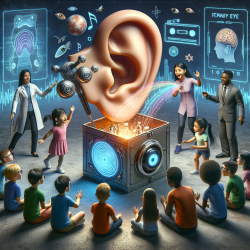As a dedicated practitioner in the field of speech-language pathology, staying abreast of the latest advancements in cochlear implant technology is crucial. The research article "Cochlear implant – state of the art" by Thomas Lenarz provides invaluable insights into current practices and future developments that can significantly enhance the outcomes for children with sensory deafness.
According to Lenarz (2018), cochlear implants (CIs) are the treatment of choice for auditory rehabilitation in patients with sensory deafness. These devices restore the function of inner hair cells by converting acoustic signals into electrical stimuli, which activate auditory nerve fibers. With rapid technological advancements, CIs now offer open-set speech understanding for most patients, including the use of telephones. This has profound implications for children, who can achieve near-normal speech and language development if their deafness is detected early and implantation is performed promptly.
Key Takeaways for Practitioners
- Early Detection and Intervention: Early detection of deafness and timely cochlear implantation are critical. The diagnostic procedures and surgical techniques have been standardized and can be adapted to individual anatomical and physiological needs, ensuring optimal outcomes for both children and adults.
- Standardized Procedures: The standardization of diagnostic and surgical procedures ensures that each patient receives tailored care, improving the success rate of cochlear implants.
- Technological Upgrades: Continuous technological upgrades enhance the performance of cochlear implants. Future developments will focus on improving electrode-nerve interfaces, increasing the number of electrical contacts, and employing biological treatments to regenerate dendrites.
- Future Innovations: The future of cochlear implants looks promising with advancements such as robot-assisted surgery for high precision, bio-hybrid electrodes coded by stem cells, and local drug delivery to support hearing preservation and regeneration.
Encouraging Further Research
Practitioners should not only implement the outcomes of current research but also stay engaged with ongoing studies. Understanding the latest advancements and integrating them into practice will ensure that children receive the most effective auditory rehabilitation. The development of the bionic ear, aiming to restore natural hearing through technology, is an exciting frontier that holds promise for even better outcomes in the future.
To read the original research paper, please follow this link: Cochlear implant – state of the art.










